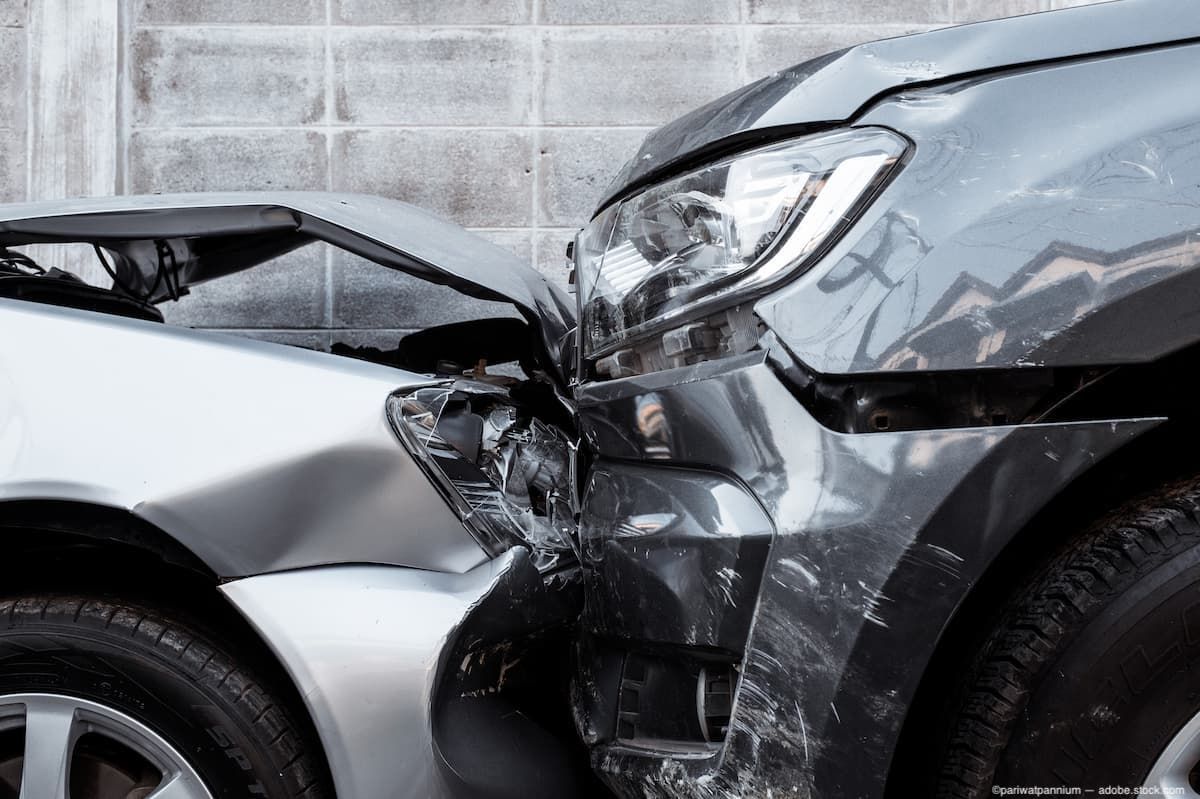Ocular injuries after motor vehicle accidents: Long-term effects on quality of life
(Image credit: AdobeStock/pariwatpannium)

A study performed by investigators at the Department of Ophthalmology, Rabin Medical Center, Petah Tikva, Israel, and the Faculty of Medicine, Tel Aviv University, Tel Aviv, Israel, found that ocular injuries sustained as the result of motor vehicle accidents (MVAs) were generally mild. Despite this, however, the injuries had a substantial impact on the patients’ ability to resume working and driving.1 Judith Brody, MD, was the lead study author.
The investigators enumerated some of the startling findings already associated with MVAs. “Head and facial injuries are commonly associated with high rates of ocular injury and resultant morbidity.2 MVAs present specific risk factors for eye injuries, including exposure to broken glass and other foreign bodies, rapid changes in velocity, lack of passenger restraint such as seatbelts, and airbag deployment.3-7 Ocular injury is the second leading cause of monocular blindness in the United States, second only to cataracts as the most common cause of visual impairment,8” they described.
In light of this, the research team wanted to determine the prevalence and outcome of MVA-associated ocular injuries and conducted a telephone survey of patients who had been involved in MVAs and presented for emergency care at a trauma center for ocular injuries they sustained in the accidents. The results of the survey and their clinical notes were reviewed.
A total of 274 patients who had been involved in MVAs over a 10-year period and had resultant ocular injuries and presented for care, and of these 40 patients (15%) completed the survey.
The survey showed that over half of patients were driving a vehicle, during which time they were wearing a seat belt or a helmet. Most of the ocular injuries were mild, and most often were bone fractures, subconjunctival hemorrhage, eyelid involvement, and corneal injury.
In addition, most survey respondents had no change in vision and considered their ocular involvement as a minor part of their injury. Most respondents returned to work and to driving within a year.
The authors commented, “… our study sheds light on the details and extent of ocular involvement and the visual ability to perform daily life activities following a MVA. Although ocular injuries were considered mild and less than a third of the patients regarded the MVA- associated ocular injury as a major factor following the accident, the injuries substantially affected the respondents' ability to return to work or driving. Further research is needed to evaluate our findings in a larger population by increasing the response rate to the survey.”
In conclusion, our study sheds light on the details and extent of ocular involvement and the visual ability to perform daily life activities following MVA. Although ocular injuries were considered mild and less than a third of the patients regarded the MVA- associated ocular injury as a major factor following the accident, the injuries substantially affected the respondents' ability to return to work or driving. Further research is needed to evaluate our findings in a larger population by increasing the response rate to the survey.
References
Brody J, Ben Ishai M, Serov-Volach I, et al. Ocular injuries associated with motor vehicle accidents: long term effects on quality of life. Int Ophthalmol. 2024;44:135; https://doi.org/10.1007/s10792-024-03083-z
Odebode T, Ademola-Popoola D, Ojo T, Ayanniyi AA (2004) Ocular and visual complications of head injury. Eye 19(5):561–566
Duma SM, Jernigan MV, Stitzel JD et al (2002) The effect of frontal airbags on eye injury patterns in automobile crashes. Arch Ophthalmol 120(11):1517–22
Duma SM, Rath AL, Jernigan MV, Stitzel JD, Herring IP (2005) The effects of depowered airbags on eye injuries in frontal automobile crashes. Am J Emerg Med 23(1):13–19
McGwin G Jr, Owsley C (2005) Risk factors for motor vehicle collision-related eye injuries. Arch Ophthalmol 123(1):89–95
Ghoraba H (2002) Posterior segment glass intraocular foreign bodies following a car accident or explosion. Graefes Arch Clin Exp Ophthalmol 240(7):524–528
Rao SK, Greenberg PB, Filippopoulos T, Scott IU, Katsoulakis NP, Enzer YR (2008) Potential impact of seatbelt use on the spectrum of ocular injuries and visual acuity outcomes after motor vehicle accidents with airbag deployment. Ophthalmology 115(3):573–576
Leonard R (2002) Statistics on vision impairment: a resource manual. Lighthouse International, New York
